Founded 1898 | Headquarters New York, United States | |
 | ||
Similar American Academy of Arts an, American Composers Orchestra, Art Students League o, Whitney Museum of American, Pennsylvania Academy of the Fin | ||
Pete seeger at the american academy of arts and letters
The American Academy of Arts and Letters is a 250-member honor society; its goal is to "foster, assist, and sustain excellence" in American literature, music, and art. Located in the Washington Heights neighborhood of Manhattan, New York City, it shares Audubon Terrace, a complex on Broadway between West 155th and 156th Streets, with the Hispanic Society of America and Boricua College.
Contents
- Pete seeger at the american academy of arts and letters
- Induction into the american academy of arts and letters
- Early years
- Federally chartered corporation
- Buildings
- Membership
- Award for Distinguished Service to the Arts
- Other awards
- References
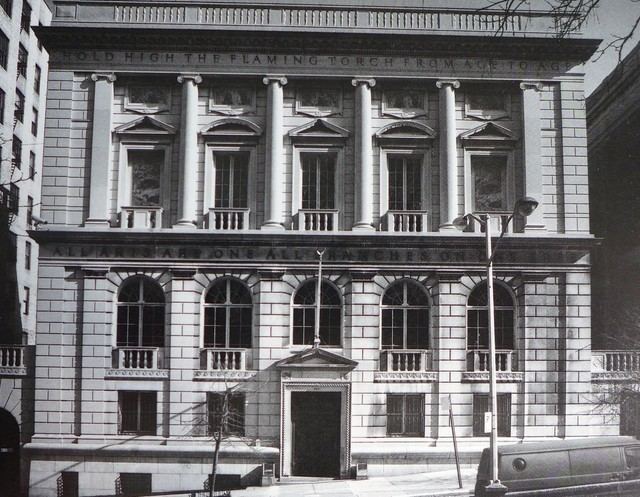
The Academy's galleries are open to the public on a published schedule. Exhibits include an annual exhibition of paintings, sculptures, photographs and works on paper from contemporary artists nominated by its members, and an annual exhibition of works by newly elected members and recipients of honors and awards. Opened in 2014, a permanent exhibit is the recreated studio of composer Charles Ives.
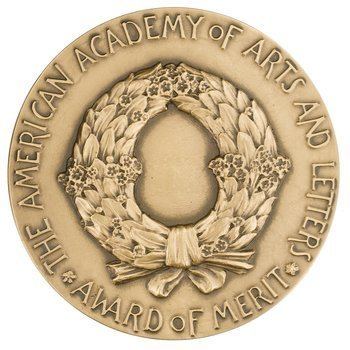
The auditorium is sought out by musicians wishing to record live because the acoustics are considered among the worlds finest.
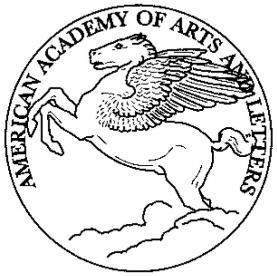
Induction into the american academy of arts and letters
Early years
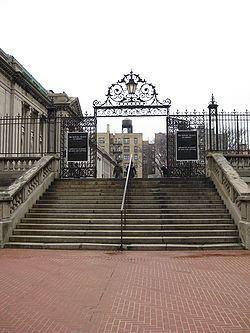
The Academy was created in 1904 by the membership of the National Institute of Arts and Letters styling itself after the French Academy. The first seven academicians were elected from ballots cast by the entire membership. They were William Dean Howells, Samuel L. Clemens, Edmund Clarence Stedman, and John Hay, representing literature; Augustus Saint-Gaudens and John La Farge, representing art; and Edward MacDowell, representing music. In 1908 poet Julia Ward Howe was elected, and thus became the first female academician. In 1976 the two groups combined under the name American Academy and Institute of Arts and Letters. In 1992 members adopted the current organizational title.
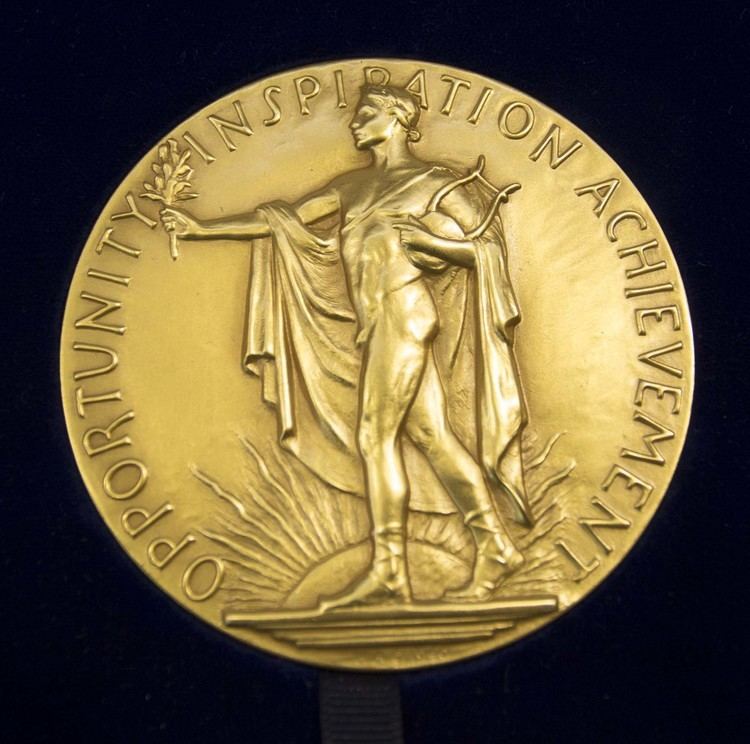
The oldest organization associated with the group was founded in 1865 at Boston. The American Social Science Association produced the National Institute of Arts and Letters in 1898. The qualification for membership in this body was to have made notable achievements in art, music, or literature. The membership was at first limited to 150. In 1904 the membership was increased by the Institute's introducing a two-tiered structure: 50 elite members and 200 regular members. The people in the elite group were gradually elected over the next several years. The larger group was called the "Institute," while the elite group was called the "Academy."
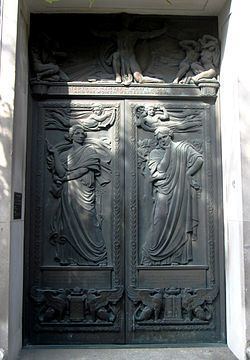
The strict two-tiered system persisted for 72 years (1904–76). In 1976 members created an organization called the American Academy and Institute of Arts and Letters. The combined Academy/Institute structure had a maximum of 250 living United States citizens as members, plus up to 75 foreign composers, artists, and writers as honorary members. It also established the annual Witter Bynner Poetry Prize in 1980 to support the work of a young poet. The two-tiered system persisted until 1993, when it was completely abandoned.
Federally chartered corporation
The Academy holds a Congressional charter under Title 36 of the United States Code (42 USC 20301 et seq.), which means that it is one of the comparatively rare "Title 36" corporations in the United States. The 1916 statute of incorporation established this institution amongst a small number of other patriotic and national organizations which are similarly chartered. The federal incorporation was originally construed primarily as an honor. The special recognition neither implies nor accords Congress any special control over the Academy, which remains free to function independently.
Active sponsors of Congressional action were Senator Henry Cabot Lodge of Massachusetts and former-President Theodore Roosevelt. The process which led to the creation of this federal charter was accompanied by controversy; and the first attempt to gain the charter in 1910 failed. Sen. Lodge re-introduced legislation which passed the Senate in 1913. The Academy was incorporated under the laws of the State of New York in 1914, which factors in decision-making which resulted in Congressional approval in 1916.
Buildings
The Academy occupies three buildings on the west end of the Audubon Terrace complex created by Archer M. Huntington, the heir to the Southern Pacific Railroad fortune and a noted philanthropist. To help convince the American Academy of Arts and Letters and the National Institute of Arts and Letters, which were separate but related organizations at the time, to move to the complex, Huntington established building funds and endowments for both.
The first building, on the south side of the complex, along West 155th Street, was designed by William M. Kendall of the firm of McKim, Mead & White; Kendall was himself a member of the Academy. This Anglo-Italian Renaissance administration building was designed in 1921 and opened in 1923. On the north side, another building housing an auditorium and gallery was designed by Cass Gilbert, also an Academy member, and was built from 1928-30. These additions to the complex necessitated considerable alterations to the Audubon Terrace plaza, which were designed by McKim, Mead & White.
In 2007, the American Numismatic Society, which had occupied a Charles P. Huntington-designed building immediately to the east of the Academy's original building, vacated that space to move to smaller quarters downtown. This building, which incorporates a 1929 addition designed by H. Brooks Price, has become the Academy's Annex and houses additional gallery space. In 2009, the space between the Annex and the administration building was turned into a new entrance link, designed by Vincent Czajka with Pei Cobb Freed & Partners.
Membership
Members of the Academy are chosen for life and have included some of the leading figures in the American art scene. They are organized into committees that award annual prizes to help up-and-coming artists. Although the names of some of the members of this organization may not be well known today, each of these men were well known in their own time. Greatness and pettiness are demonstrable among the Academy members, even during the first decade during which William James declined his nomination on the grounds that his little brother Henry had been elected first. One of the giants of the academy in his time, Robert Underwood Johnson, casts a decades-long shadow in his one-man war against encroaching modernism, blackballing such writers as H. L. Mencken, F. Scott Fitzgerald, and T. S. Eliot (before his emigration to England disqualified him for full membership). The former President of Harvard, Charles W. Eliot declined election to the Academy "because he was already in so many societies that he didn't want to add to the number."
Although never explicitly excluded, women were simply not elected to membership in the early years. The admission of Julia Ward Howe in January 1908 (at the age of 88) as the first woman in the Academy was only one incident in the intense debate about the very consideration of female members. In 1926, the election of four women – Edith Wharton, Margaret Deland, Agnes Repplier and Mary E. Wilkins Freeman – was said to have "marked the letting down of the bars to women."
Below is a partial list of past members of the American Academy of Arts and Letters and its successor institution, the National Institute and Academy of Arts and Letters:
Award for Distinguished Service to the Arts
The award, a certificate, and $1,000 goes to a United States resident who has "rendered notable service to the arts".
Other awards
The academy gives out numerous awards, with recipients chosen by committees made up of Academy members. Candidates for all awards must be nominated by Academy members, except for the Richard Rodgers awards, for which an application may be submitted.
